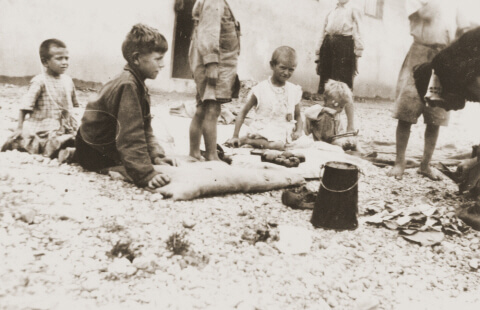The Roma are a people who, from the fifteenth century to the present day, have lived in Europe and share a common language, culture and nomadic way of life. During the Third Reich, both Roma and Jews were defined as ‘enemies of the racial state’ by the Nuremberg Laws. Both groups were vilified and persecuted, culminating in their near annihilation in Nazi-occupied territories during the war. Estimates of the death toll of the Roma in World War II range from 500,000 to 1, 500,000. West Germany finally recognised the genocide of the Roma in 1982.
For centuries the Roma were subjected to persecution and humiliation in Europe. They were stigmatised as repeat offenders, social misfits and vagabonds. Consequently, they were portrayed as posing a danger to German racial purity and were slated for elimination. From 1935, the Roma were persecuted by the Nazi regime and began to be transferred to internment camps on the outskirts of cities and to concentration camps, including Dachau, Dieselstrasse, Marzahn and Vennhausen. They were also herded into ghettos, including the Warsaw Ghetto. During and after Operation Reinhard (1941) an undetermined number of Roma were killed in extermination camps such as Treblinka and Auschwitz-Birkenau.


